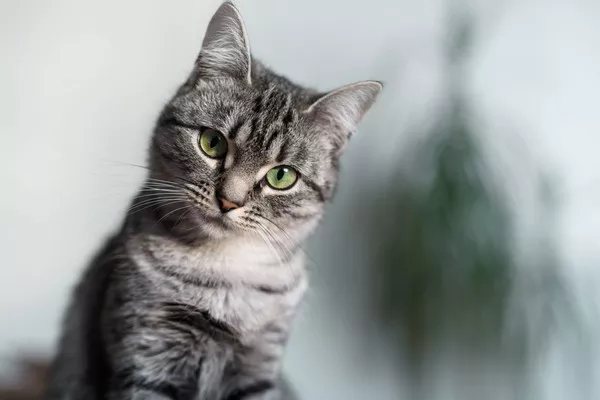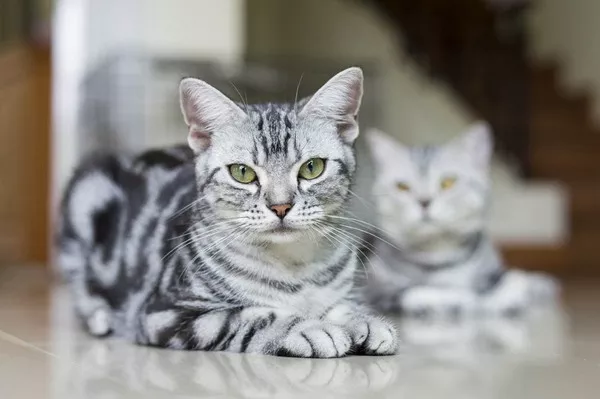Burmese cats are known for their distinctively beautiful eyes which are usually a rich gold color. As these cats age, some owners may notice changes in the color of their cat‘s eyes. So do Burmese cat eyes change color? The answer is yes, but it is important to understand why and how this occurs.
Genetics and Eye Color
The color of a cat’s eyes is determined by genetics. Kittens are born with blue eyes, which gradually change to their adult color as they mature. The gene responsible for eye color is located on the X chromosome, which means that female cats have two copies of this gene (XX) while male cats only have one copy (XY). This is why female cats can have a wider variety of eye colors than male cats.
Burmese Cat Eye Colors
Burmese cats are known for their striking golden eyes, which are caused by the presence of a pigment called melanin. There are two types of melanin: eumelanin, which produces black and brown pigments, and pheomelanin, which produces red and yellow pigments. The amount and distribution of these pigments determine the color of a cat’s coat and eyes.
Burmese cats typically have either gold or green eyes. Gold eyes contain more eumelanin, while green eyes contain more pheomelanin. However, not all Burmese cats have the same shade of gold or green eyes. Eye color can range from pale yellow to deep copper depending on the concentration of melanin in the iris.
Changes in Eye Color
While Burmese cats are known for their golden eyes, some owners may notice changes in the color of their cat’s eyes over time. This is particularly common in older cats, but can also occur in younger cats. There are several reasons why a cat’s eye color may change.
1. Age
As cats age, their eyes may become cloudy or hazy due to the development of cataracts. This can cause changes in the appearance of the iris and may give the impression that the eye color has changed. In addition, the amount of melanin in the iris may decrease with age, causing the eyes to appear lighter in color.
2. Disease
Certain diseases or infections can also cause changes in eye color. For example, feline infectious peritonitis (FIP) can cause the iris to become inflamed and change color. Other conditions, such as glaucoma or uveitis, can cause changes in the appearance of the iris due to increased pressure within the eye.
3. Injury
Trauma to the eye or head can also cause changes in eye color. If the eye is injured, blood vessels in the iris may break and cause bleeding within the eye. This can result in a change in the appearance of the iris or a red or black discoloration. Head injuries can also cause changes in eye color if there is damage to the optic nerve.
4. Genetics
Changes in eye color can also be caused by genetics. Some cats may have genes that cause them to develop heterochromia, which is when each eye is a different color. This can occur in Burmese cats and may cause one eye to be green while the other is gold.
What color eyes do Burmese cats have?
Burmese cats are known for their distinctive eye color, which is a deep and vivid shade of gold. This color is often described as “amber” or “yellow-green” and is one of the breed’s most defining features.
The gene responsible for this eye color is the Burmese gene, also known as the “b” gene. This gene is dominant and causes the cat’s iris to produce more pigment than usual, resulting in the intense gold coloration.
It’s worth noting that not all Burmese cats have the same shade of gold eyes. Variations can occur depending on genetics, age, and lighting conditions. Some Burmese cats may have lighter or darker shades of gold, while others may appear more greenish or brownish in certain lighting.
In addition to their striking eye color, Burmese cats are also known for their sleek and muscular bodies, short glossy coats, and friendly, affectionate personalities. They are a popular breed among cat lovers due to their loving nature and playful temperament, making them great companions for families and individuals alike.
Conclusion
Burmese cat eyes can change color for a variety of reasons. As cats age, their eyes may become cloudy or hazy, and the amount of melanin in the iris may decrease. Certain diseases or infections can also cause changes in eye color, as can injury or genetics. While changes in eye color are not necessarily a cause for concern, it is important to monitor your cat’s eye health and seek veterinary care if you notice any significant changes or signs of discomfort.

![Do Birman Cats Like to Cuddle? [Revealed!]](https://www.catsmeowweb.com/wp-content/uploads/2023/06/burmese-cat-31.webp)









![Do Birman Cats Like to Cuddle? [Revealed!]](https://www.catsmeowweb.com/wp-content/uploads/2023/06/burmese-cat-32.webp)














